- 1如何通过IIS设置301重定向_重定义iis服务路径
- 2SSH框架学习之Hibernate ---- 4、Hibernta的查询操作API_hibanate异步查询
- 3vLLM部署推理及相关重要参数_vllm prompt 参数
- 4二叉搜索树 和 哈希表 (JAVA)
- 5signature=31b14d6b78c312a19862874a7a48a87e,webpack-spritesmith/package-lock.json at a87bd0845ca4e83c...
- 6python3 - AES 加密实现java中SHA1PRNG 算法
- 7C++登录系统
- 8谁说专科学历找不到Java工作?自学Java,第一份工作13k。_学历低java找不到工作怎么办
- 9Ubuntu16.04下ssh和samba服务器安装与配置_简述使用openssh和samba的服务安装配置过程
- 10Githack下载安装教程 windows_githack安装过程
Unity学习2:如何实现个性化渲染平面(图文详细)_unity 个性化设计
赞
踩
Unity学习2:如何实现个性化渲染平面(图文详细)
AR Plane Manager(平面追踪对象管理器)
平面管理器是一种可跟踪的管理器。
平面管理器为环境中每个检测到的平面创建游戏对象。平面是由位姿、尺寸和边界点表示的平面。边界点是凸的(每个检测出来的边界角都是大于90°)。
环境中可以被检测为平面的特征示例包括水平桌子、地板、工作台面和垂直墙壁。
负责管理平面以及管理检测出的这些平面,但不负责渲染平面,由其Plane Prefab属性指定的预制体负责
两个属性组件:
- Plane Prefab:平面预制体,不赋值的会自动实例化一个空对象
- Detection Mode:设置平面检测方式,如水平平面(Horizontal),垂直平面(Vertical),水平和垂直平面(Everything),不检测平面(Nothing)
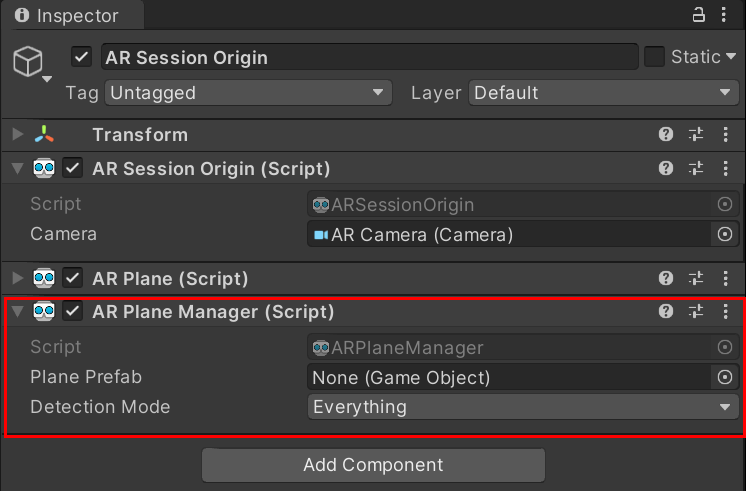
可视化平面
要可视化平面,您需要创建一个 Prefab 或 GameObject,其中包含一个订阅 ARPlane 的 boundaryChanged 事件的组件。 ARFoundation 提供了一个 ARPlaneMeshVisualizer。该组件从边界顶点生成网格并将其分配给 MeshCollider、MeshFilter 和 LineRenderer(如果存在)。
要创建一个新的 GameObject,然后您可以使用它来创建您的 Prefab,请在您的 Scene 视图中单击鼠标右键,然后从出现的上下文菜单中选择 GameObject > XR > AR Default Plane
新建一个AR Default Plane对象作为预制体(默认平面预制体)
其中各属性的说明:
AR Plane:负责各类属性事宜,如是否在移除平面时销毁此实例化对象
AR Plane Mesh Visualizer:主要从边界特征点和其他特征点三角化生成一个平面网格
Mesh Renderer:使用Mesh Renderer采用合适材质渲染平面
Line Renderer:负责渲染平面可视化后的边界连线
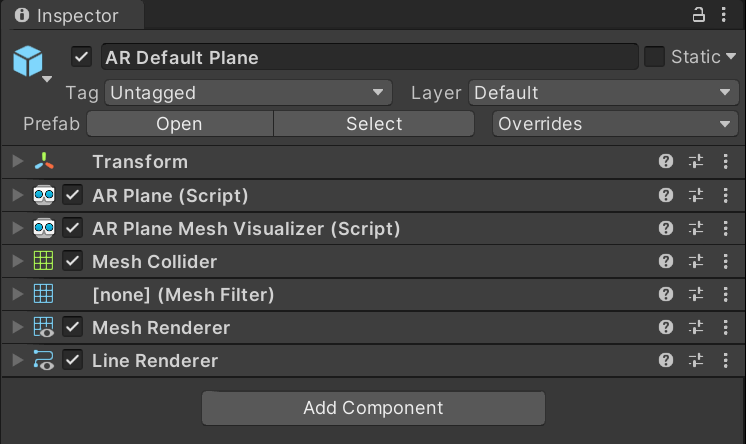
演示视频:默认浅黄色的平面,黑色的边界线
https://www.bilibili.com/video/BV1pZ4y1f7Ru?spm_id_from=333.999.0.0
创建 AR Default Plane 后,将其分配给 ARPlaneManager 的 Plane Prefab 字段。您可以直接使用它,也可以通过将AR Default Plane 拖到 Assets 文件夹中来创建 Prefab。默认平面如下所示:
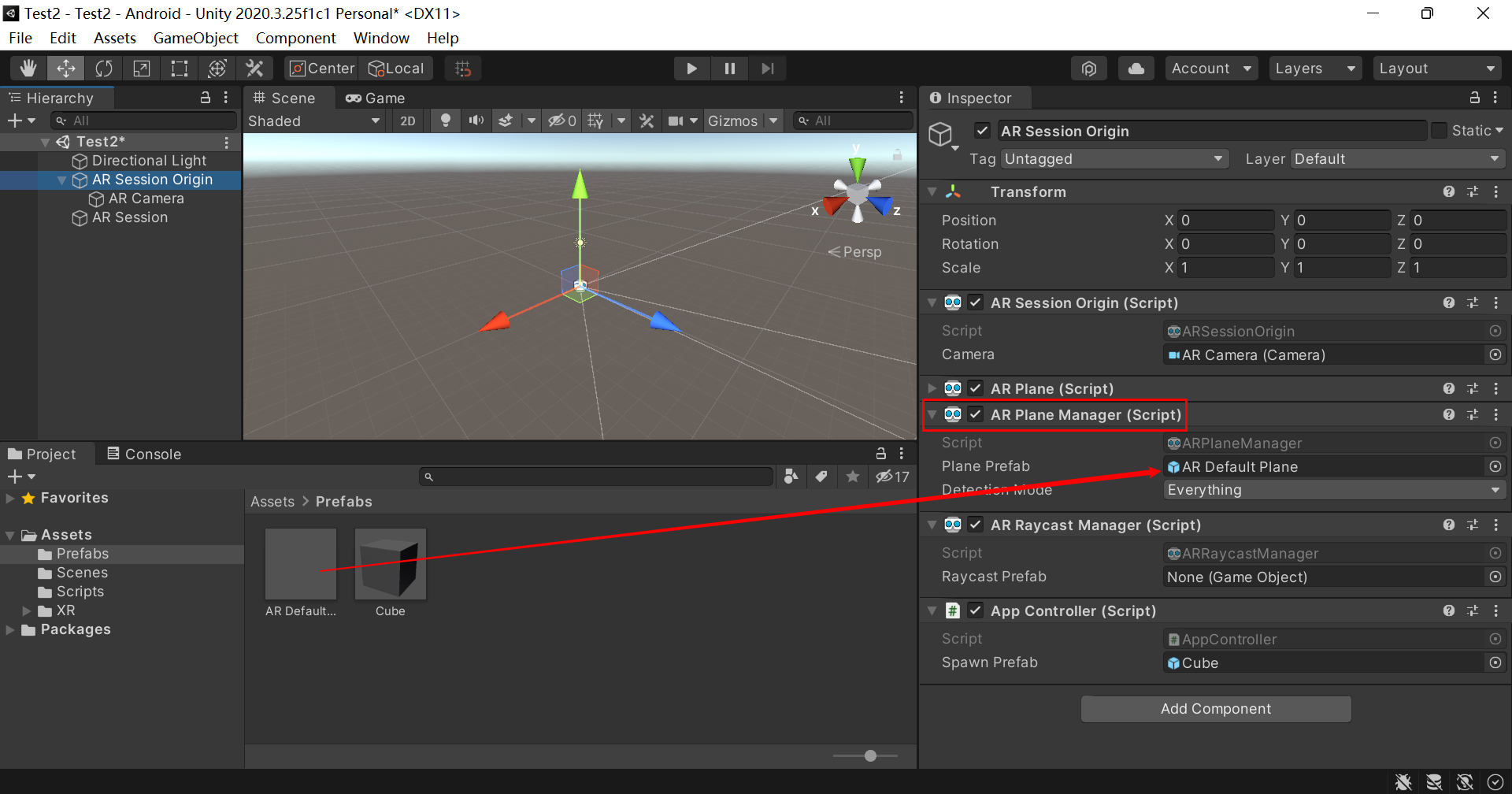
个性化渲染平面
我下载的是官方的demo
-
首先将AR Default Plane对象下的Line Renderer组件移除
-
编写一个c#脚本ARFeatheredPlaneMeshVisualizer,并将其作为组件添加到AR Default Plane对象上
using System.Collections.Generic; using UnityEngine; using UnityEngine.XR.ARFoundation; /// <summary> /// This plane visualizer demonstrates the use of a feathering effect /// at the edge of the detected plane, which reduces the visual impression /// of a hard edge. /// </summary> [RequireComponent(typeof(ARPlaneMeshVisualizer), typeof(MeshRenderer), typeof(ARPlane))] public class ARFeatheredPlaneMeshVisualizer : MonoBehaviour { [Tooltip("The width of the texture feathering (in world units).")] [SerializeField] float m_FeatheringWidth = 0.2f; /// <summary> /// The width of the texture feathering (in world units). /// </summary> public float featheringWidth { get { return m_FeatheringWidth; } set { m_FeatheringWidth = value; } } void Awake() { m_PlaneMeshVisualizer = GetComponent<ARPlaneMeshVisualizer>(); m_FeatheredPlaneMaterial = GetComponent<MeshRenderer>().material; m_Plane = GetComponent<ARPlane>(); } void OnEnable() { m_Plane.boundaryChanged += ARPlane_boundaryUpdated; } void OnDisable() { m_Plane.boundaryChanged -= ARPlane_boundaryUpdated; } void ARPlane_boundaryUpdated(ARPlaneBoundaryChangedEventArgs eventArgs) { GenerateBoundaryUVs(m_PlaneMeshVisualizer.mesh); } /// <summary> /// Generate UV2s to mark the boundary vertices and feathering UV coords. /// </summary> /// <remarks> /// The <c>ARPlaneMeshVisualizer</c> has a <c>meshUpdated</c> event that can be used to modify the generated /// mesh. In this case we'll add UV2s to mark the boundary vertices. /// This technique avoids having to generate extra vertices for the boundary. It works best when the plane is /// is fairly uniform. /// </remarks> /// <param name="mesh">The <c>Mesh</c> generated by <c>ARPlaneMeshVisualizer</c></param> void GenerateBoundaryUVs(Mesh mesh) { int vertexCount = mesh.vertexCount; // Reuse the list of UVs s_FeatheringUVs.Clear(); if (s_FeatheringUVs.Capacity < vertexCount) { s_FeatheringUVs.Capacity = vertexCount; } mesh.GetVertices(s_Vertices); Vector3 centerInPlaneSpace = s_Vertices[s_Vertices.Count - 1]; Vector3 uv = new Vector3(0, 0, 0); float shortestUVMapping = float.MaxValue; // Assume the last vertex is the center vertex. for (int i = 0; i < vertexCount - 1; i++) { float vertexDist = Vector3.Distance(s_Vertices[i], centerInPlaneSpace); // Remap the UV so that a UV of "1" marks the feathering boudary. // The ratio of featherBoundaryDistance/edgeDistance is the same as featherUV/edgeUV. // Rearrange to get the edge UV. float uvMapping = vertexDist / Mathf.Max(vertexDist - featheringWidth, 0.001f); uv.x = uvMapping; // All the UV mappings will be different. In the shader we need to know the UV value we need to fade out by. // Choose the shortest UV to guarentee we fade out before the border. // This means the feathering widths will be slightly different, we again rely on a fairly uniform plane. if (shortestUVMapping > uvMapping) { shortestUVMapping = uvMapping; } s_FeatheringUVs.Add(uv); } m_FeatheredPlaneMaterial.SetFloat("_ShortestUVMapping", shortestUVMapping); // Add the center vertex UV uv.Set(0, 0, 0); s_FeatheringUVs.Add(uv); mesh.SetUVs(1, s_FeatheringUVs); mesh.UploadMeshData(false); } static List<Vector3> s_FeatheringUVs = new List<Vector3>(); static List<Vector3> s_Vertices = new List<Vector3>(); ARPlaneMeshVisualizer m_PlaneMeshVisualizer; ARPlane m_Plane; Material m_FeatheredPlaneMaterial; }- 1
- 2
- 3
- 4
- 5
- 6
- 7
- 8
- 9
- 10
- 11
- 12
- 13
- 14
- 15
- 16
- 17
- 18
- 19
- 20
- 21
- 22
- 23
- 24
- 25
- 26
- 27
- 28
- 29
- 30
- 31
- 32
- 33
- 34
- 35
- 36
- 37
- 38
- 39
- 40
- 41
- 42
- 43
- 44
- 45
- 46
- 47
- 48
- 49
- 50
- 51
- 52
- 53
- 54
- 55
- 56
- 57
- 58
- 59
- 60
- 61
- 62
- 63
- 64
- 65
- 66
- 67
- 68
- 69
- 70
- 71
- 72
- 73
- 74
- 75
- 76
- 77
- 78
- 79
- 80
- 81
- 82
- 83
- 84
- 85
- 86
- 87
- 88
- 89
- 90
- 91
- 92
- 93
- 94
- 95
- 96
- 97
- 98
- 99
- 100
- 101
- 102
- 103
- 104
- 105
- 106
- 107
- 108
- 109
- 110
- 111
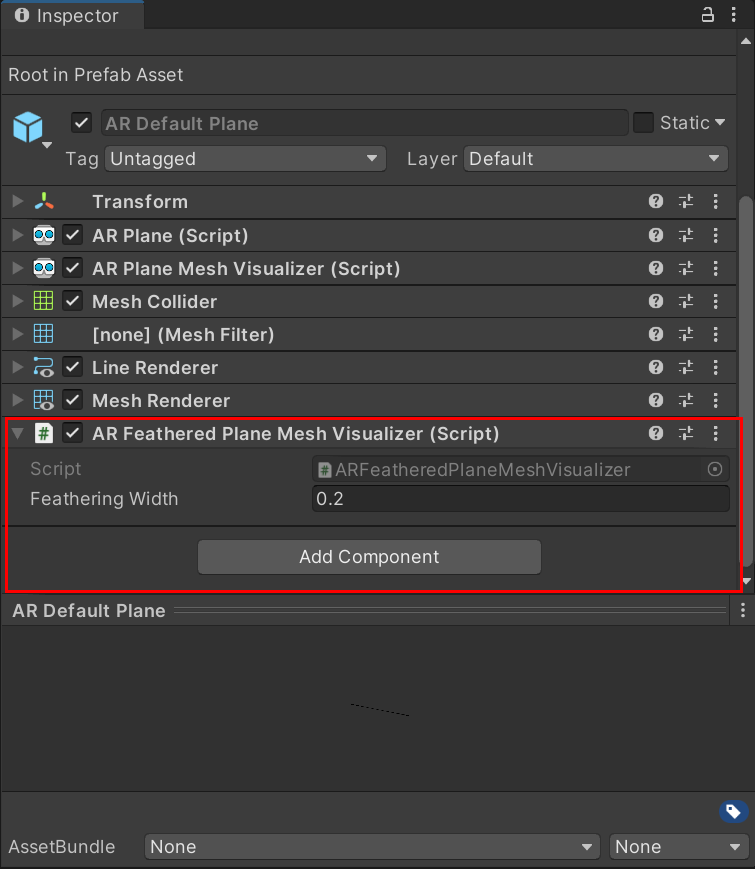
-
在project窗口的Assets下新建一个文件夹Shaders,在其中右键-》create-》shader-》Unlit Shader创建一个shader文件,并命名为FeatheredPlaneShader
Shader "Unlit/FeatheredPlaneShader" { Properties { _MainTex("Texture", 2D) = "white" {} _TexTintColor("Texture Tint Color", Color) = (1,1,1,1) _PlaneColor("Plane Color", Color) = (1,1,1,1) } SubShader { Tags { "RenderType" = "Transparent" "Queue" = "Transparent" } LOD 100 Blend SrcAlpha OneMinusSrcAlpha ZWrite Off Pass { CGPROGRAM #pragma vertex vert #pragma fragment frag #include "UnityCG.cginc" struct appdata { float4 vertex : POSITION; float2 uv : TEXCOORD0; float3 uv2 : TEXCOORD1; UNITY_VERTEX_INPUT_INSTANCE_ID }; struct v2f { float4 vertex : SV_POSITION; float2 uv : TEXCOORD0; float3 uv2 : TEXCOORD1; UNITY_VERTEX_OUTPUT_STEREO }; sampler2D _MainTex; float4 _MainTex_ST; fixed4 _TexTintColor; fixed4 _PlaneColor; float _ShortestUVMapping; v2f vert(appdata v) { v2f o; UNITY_SETUP_INSTANCE_ID(v); UNITY_INITIALIZE_OUTPUT(v2f, o); UNITY_INITIALIZE_VERTEX_OUTPUT_STEREO(o); o.vertex = UnityObjectToClipPos(v.vertex); o.uv = TRANSFORM_TEX(v.uv, _MainTex); o.uv2 = v.uv2; return o; } fixed4 frag(v2f i) : SV_Target { UNITY_SETUP_STEREO_EYE_INDEX_POST_VERTEX(i); fixed4 col = tex2D(_MainTex, i.uv) * _TexTintColor; col = lerp(_PlaneColor, col, col.a); // Fade out from as we pass the edge. // uv2.x stores a mapped UV that will be "1" at the beginning of the feathering. // We fade until we reach at the edge of the shortest UV mapping. // This is the remmaped UV value at the vertex. // We choose the shorted one so that ll edges will fade out completely. // See ARFeatheredPlaneMeshVisualizer.cs for more details. col.a *= 1 - smoothstep(1, _ShortestUVMapping, i.uv2.x); return col; } ENDCG } } }- 1
- 2
- 3
- 4
- 5
- 6
- 7
- 8
- 9
- 10
- 11
- 12
- 13
- 14
- 15
- 16
- 17
- 18
- 19
- 20
- 21
- 22
- 23
- 24
- 25
- 26
- 27
- 28
- 29
- 30
- 31
- 32
- 33
- 34
- 35
- 36
- 37
- 38
- 39
- 40
- 41
- 42
- 43
- 44
- 45
- 46
- 47
- 48
- 49
- 50
- 51
- 52
- 53
- 54
- 55
- 56
- 57
- 58
- 59
- 60
- 61
- 62
- 63
- 64
- 65
- 66
- 67
- 68
- 69
- 70
- 71
- 72
- 73
- 74
- 75
- 76
- 77
- 78
- 79
- 80
- 81
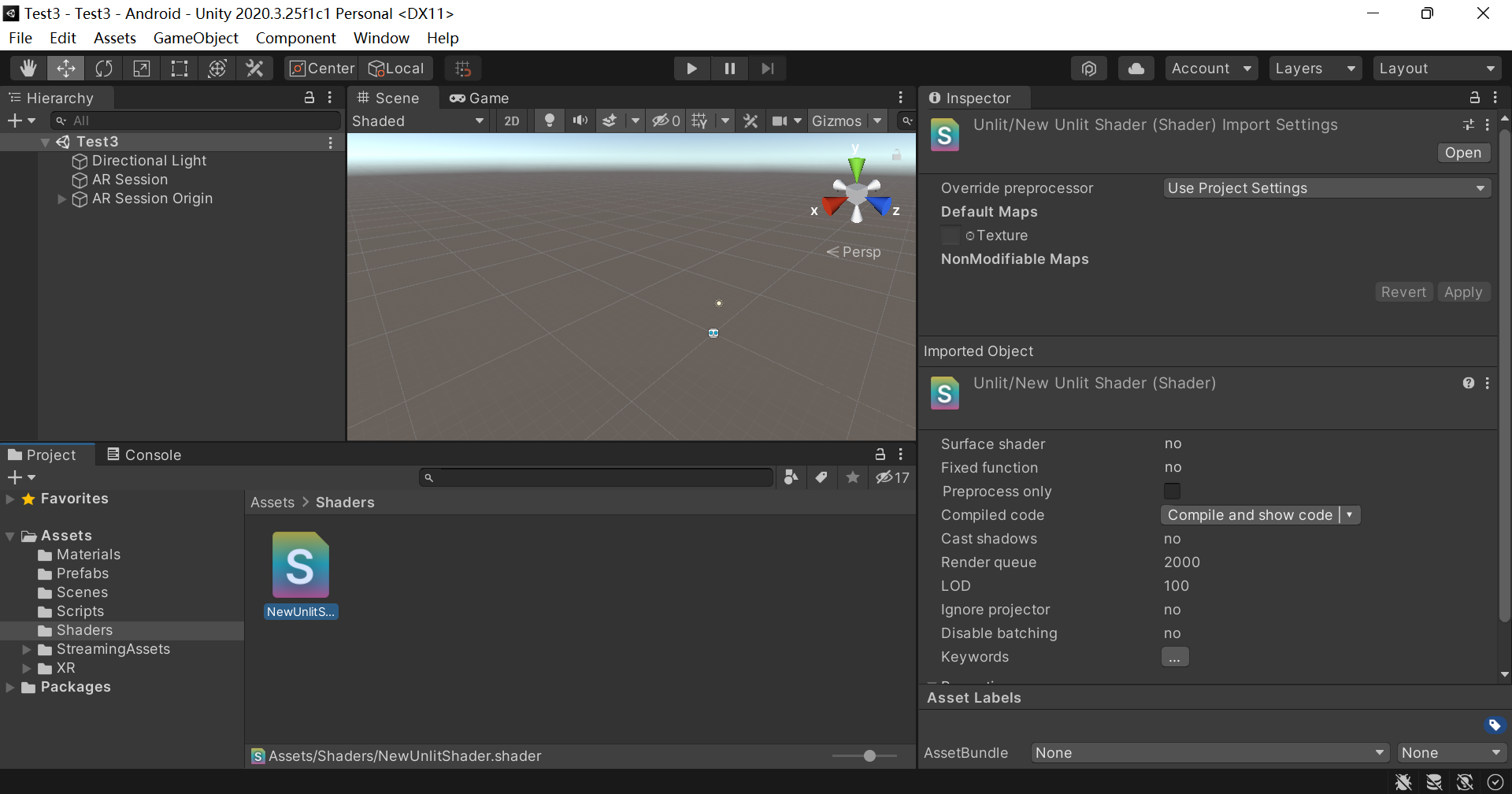
-
然后在Materials文件下创建一个新的材质,右键-》create-》material,并命名为Plane Mat,其下有一属性Shader,在其中搜索刚写好的shader脚本代码,添加进来

-
在project窗口的Assets下新建一个文件夹Textures,将一个png格式的渲染图片拖到此文件夹下,自动生成一个同名的(Texture 2D)文件
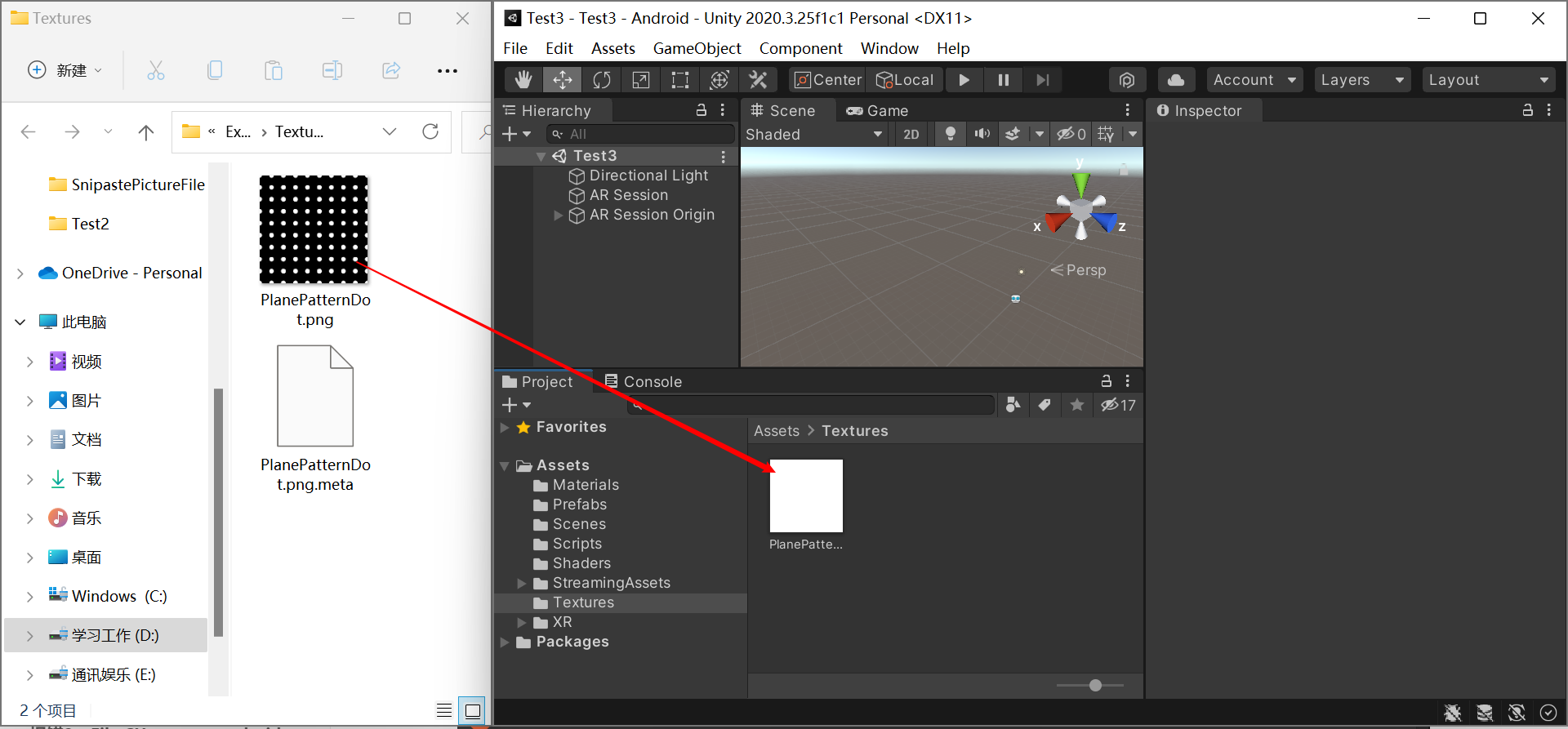
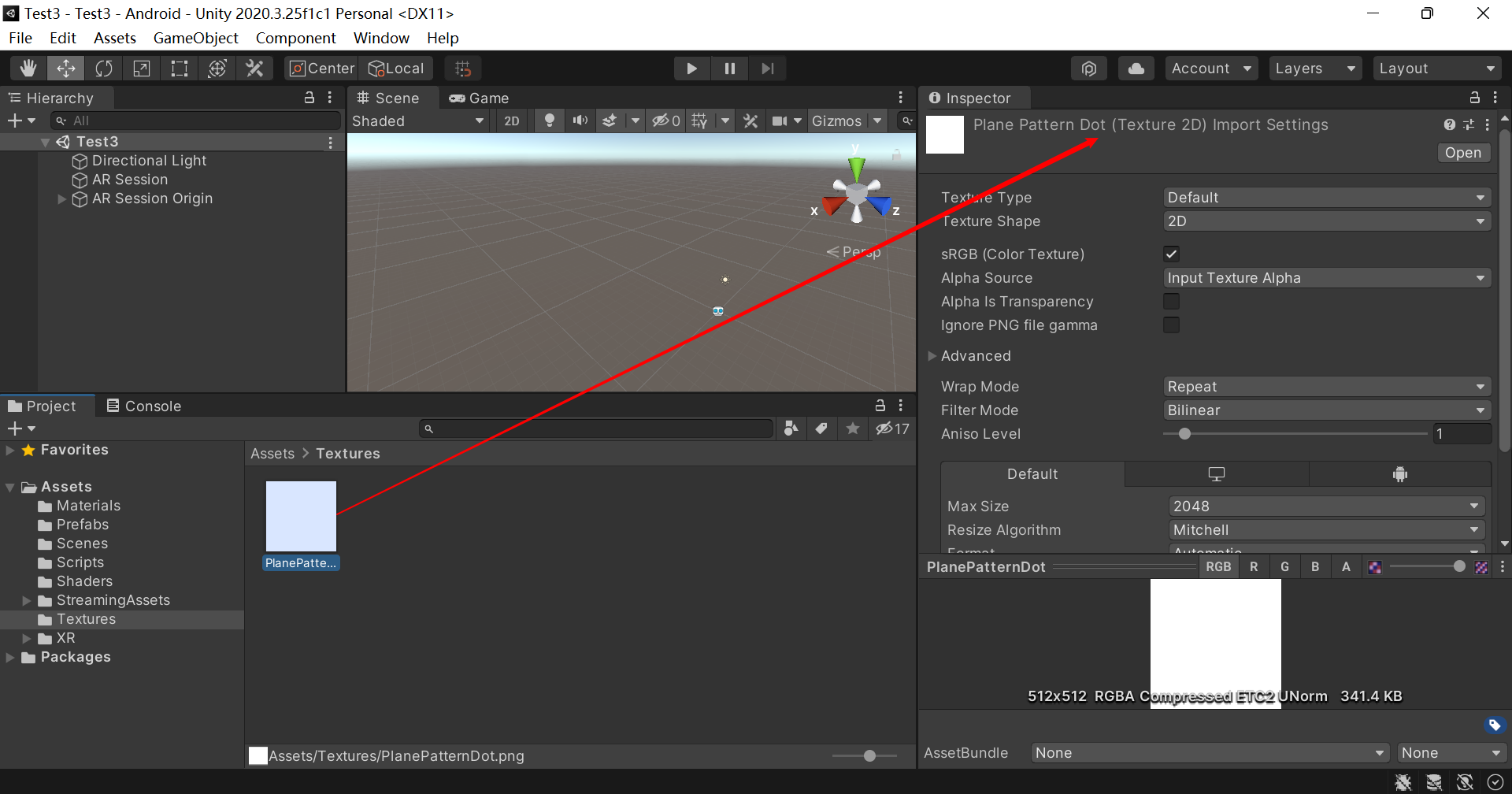

-
选中Plant Mat,在Inspector窗口下,有一个Texture属性,选择我们刚拖进来的png图片,其中Texture Tint Color为纹理显示的颜色,Plane Color为平面的颜色,再将这个材质拖动添加到AR Default Plane对象上去,
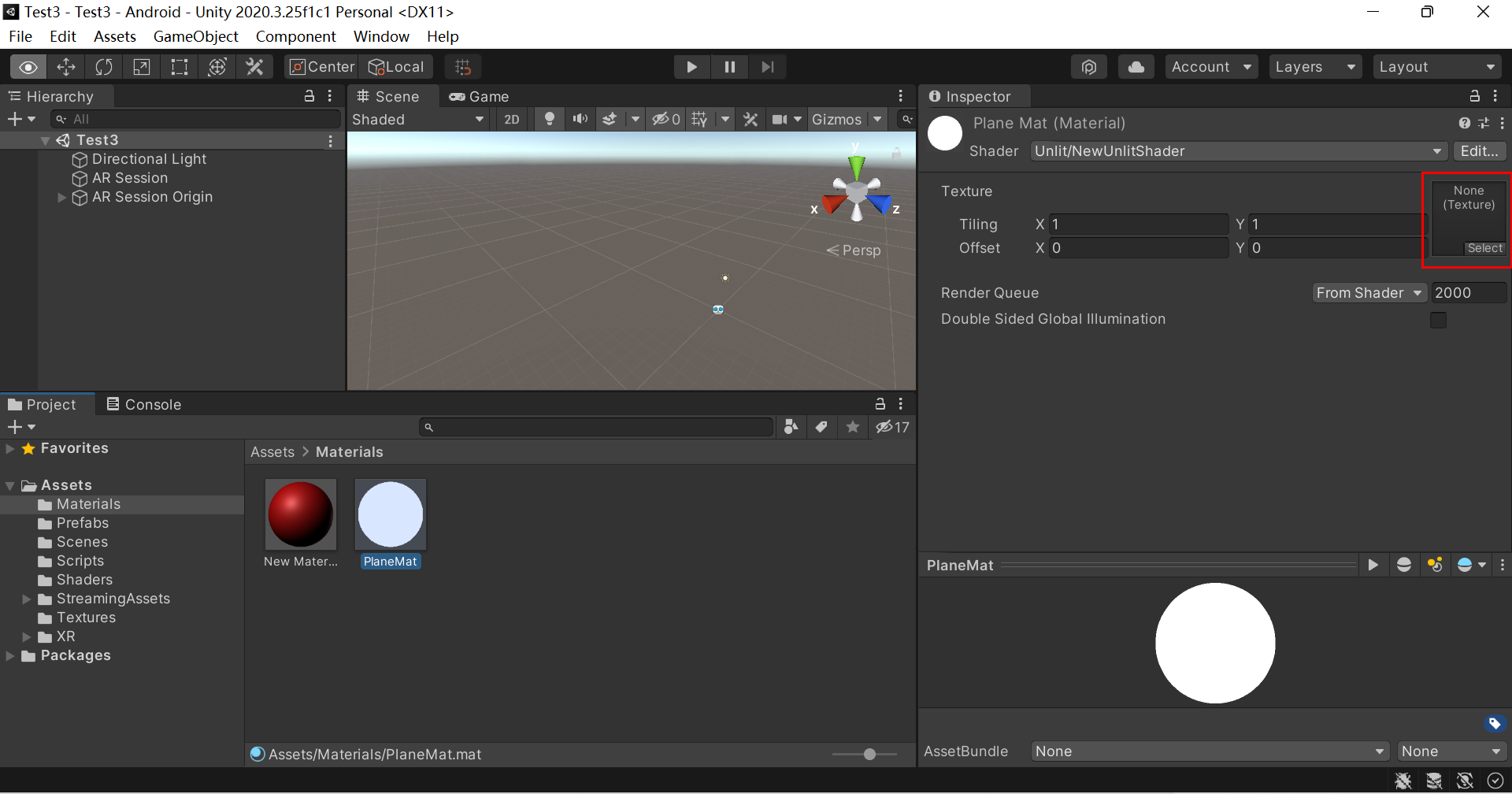
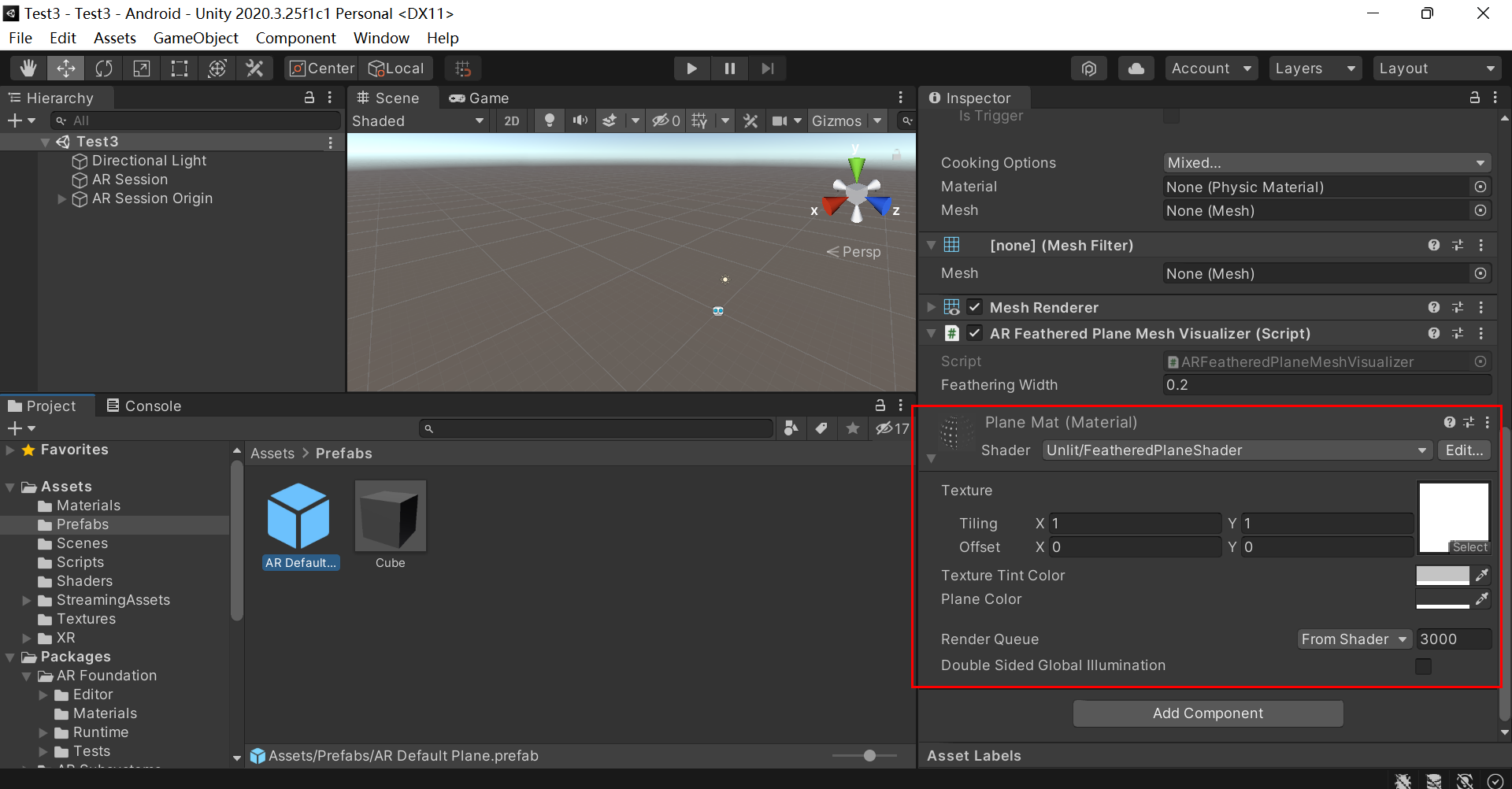
-
至此个性化渲染平面已经制作完成,总结一下:不同于默认的黄色平面,黑色边界线,自定义的平面效果可以设置Shader脚本渲染Texture图片纹理属性,并将Texture图片设置在一个新材质material上,material可以设置纹理颜色和平面背景颜色(一般是透明),最终在Android手机上跑一下效果:
https://www.bilibili.com/video/BV16P4y1j7Po?spm_id_from=333.999.0.0


